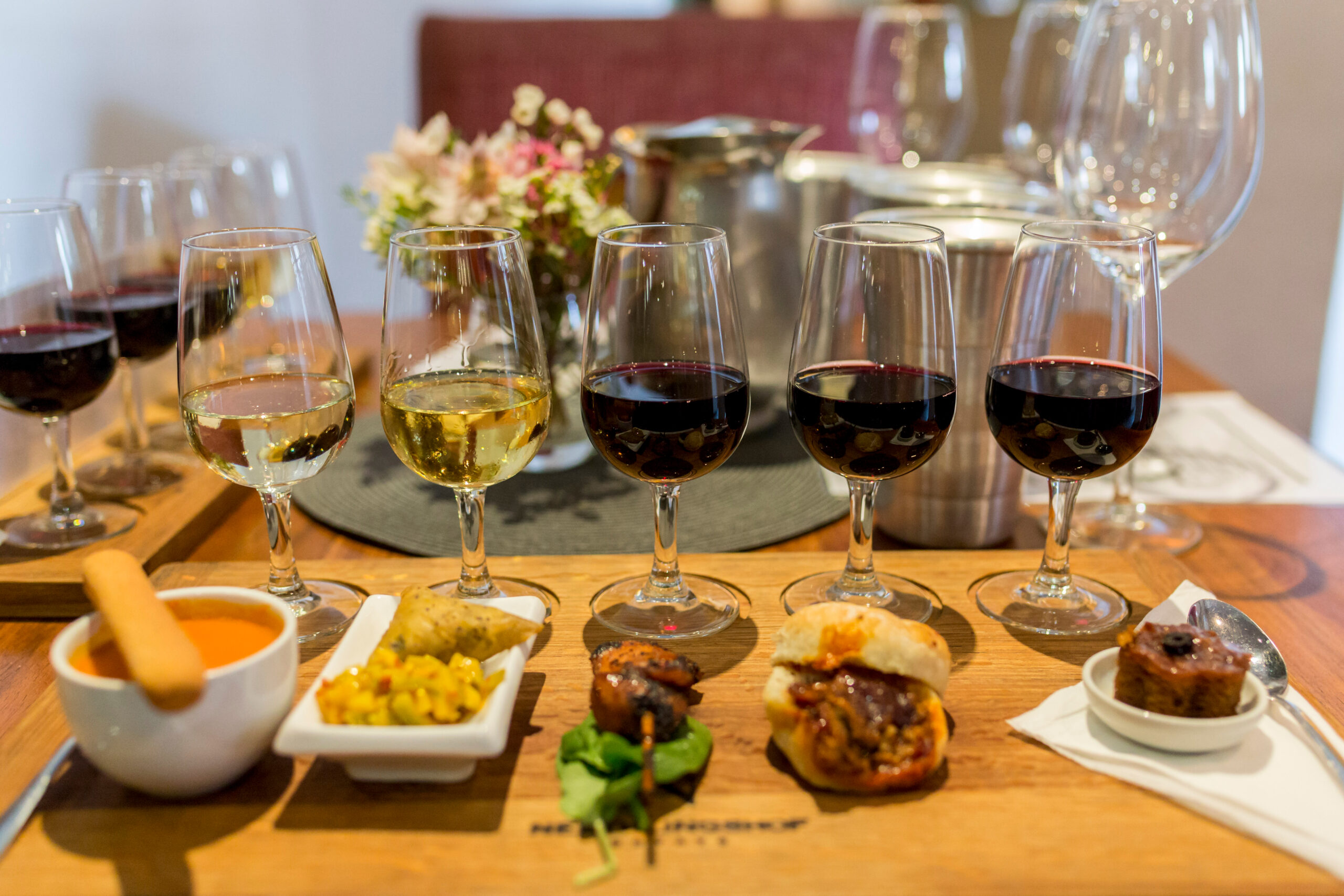5 things planners can learn from “The Gastronomad Experience”
No doubt you’ve heard the phrase “surprise and delight” mentioned a few times over the years in discussions of meeting and event design. It’s an easy concept to grok, and who wouldn’t want a little surprise and delight in their events? We’ve all seen examples of it: a marching band sent to guide us from one area to another, a dogsled on wheels bursting in the rear doors of a ballroom being pulled by actual dogs, unannounced celebrity or musical guests, or a secret gift suite you have to know the password to enter.
Unfortunately, more often than not these examples are bookended by rather ordinary conference experiences consisting of three hours of general session, two or three panel discussions, four hours of education sessions, convention center “chicken, steak, or veggie” meals, and tradeshow passport promotions. And so we’re left with moments of surprise and delight, swimming in a stew of the unexceptional.
But what if you had a program that was truly surprise and delight from beginning to end? What would that look like? Recently I got a glimpse of something very, very close to exactly that, and as usual, I couldn’t wait to share a few takeaways.
The Rise of the Gastronomad

Long before the current Work from Anywhere revolution, Mike and Amira Elgan were some of the original digital nomads. As writers, they could literally work anywhere in the world. So after the kids were grown, they moved out of southern California and started living around the world with only one rule: never less than three months in one location.
This made sure they had time to immerse themselves in the local culture- and the local food. Food and culture often go hand-in-hand, and as lovers of both, they began to make friends with some of the best local chefs, winemakers, cheesemakers, bakers, brewers, restauranteurs, and hoteliers wherever they called home for that period of time: Provence, France. Conegliano, Italy. Oaxaca, Mexico. Marrakesh, Morocco.
Read More:Le Bon Appetit Fundraiser Steeped in Memphis Food, Music and Restoration Culture
People kept telling them, “I wish I could do that!”, and so they created The Gastronomad Experiences. These wouldn’t be ordinary tourism experiences. They wouldn’t be about the usual sites and sounds of the big tourist destinations. They’d be small batch (our group of 11 was the largest they’d ever done), food- and wine-oriented, and about the people and culture of the regions. You don’t tour some giant winery from behind a glass wall, you sit at the dining room table of the vintner, with photos of five generations of winemakers on the wall, tasting each of their varieties.
But the secret sauce was, almost from day one, that guests didn’t know what they were going to be doing that day. Every day of the experience is a mystery. All you know is what I’ve told you- it’s about food, culture, wine, friendship, and tradition. We chose to join “The Prosecco Experience” in northern Italy, and it was truly a life-changing experience.
The Joy of Giving Up Control
In the weeks leading up to our trip, people would ask me what we were going to do during the experience, and my answer was an enthusiastic, “I have no idea!” When I first pitched the idea to my wife, I was a little nervous about how she’d react to that part of the deal. Friends were concerned the whole thing was a scam. I was pretty sure it wasn’t. After all, Mike is a technology journalist and regular on the This Week in Tech podcast network and had been talking bout the experiences for years.
In the end, my wife was all for it. And after years of working events planned down to the second, and as a show caller having to call sometimes hundreds of cues in less than a minute, I was ready for a week of only having to worry about what time I should be downstairs in the morning and what kind of shoes I should wear. Everyone else on the experience felt the same. Amira says she always offers the itineraries for people who really want them, but almost nobody ever takes her up on it.
So is it possible that we might be over-estimating the importance of schedules and down-to-the-minute agendas for the majority of our attendees? Where’s the magic in that? Where’s the mystery?
The Ultimate in Flexibility

From time to time, I would notice Amira sneaking away from the group to make or take phone calls. Sometimes it was the minibus driver, sometimes it was to update our next destination on our timing. I wasn’t trying to eavesdrop, but my natural eventprofs curiosity takes over sometimes (remember, I’m the guy that peeked out of his headset on the Avatar ride at Disney to see how it worked), and it made me realize a few things.
There’s another sneaky benefit for the planners in all of this “no schedule” thing: if attendees don’t know what they’re “supposed” to be doing, it’s less obvious if the plan changes or something goes wrong. If there’s no schedule, you’re never running late (at least in their eyes), and you’re not disappointed if something gets cut.
While most of our agenda almost certainly had to be planned in advance (reservations for 13 for a nine-course meal don’t just happen), I’m pretty sure a few stops got shuffled around or possibly even cut out of the plan entirely. Each day had enough flexibility built-in that I almost never felt rushed, and I’ll never know what, if anything, we missed. Compare that to the non-stop “Go! Go! Go!” of a family vacation where you don’t even get to do everything you planned, much less the usual three-day conference model with more sessions than you could possibly attend.
The Picture I Didn’t Have to Take

OK, this might seem like a strange one, but it struck me that we’re seeing fewer and fewer roaming photographers at our events, and when we do they’re just taking marketing photos. It’s like we’ve assumed that everyone is taking photos with their phones and posting them on social media, so why do we need the expense of a photographer? On our trip, I started out taking photos every two seconds with my phone. The scenery, the food, the wine- all so beautiful!
Mike created a shared Google Photos album for us to upload anything we took with our personal cameras, but he also acted as the official photographer, taking amazing shots with a professional-level DSLR camera. As he uploaded his photos every night, I realized he was taking all the same photos I was, only much higher-quality. After about day two, I stopped taking photos except for those I was pretty sure nobody else would take, and just let myself enjoy the experience. It was actually a relief to know that I didn’t have to worry about documenting the trip, and my phone started staying in my pocket a lot more, making it even less likely to serve as a distraction. Relax, enjoy, it’s taken care of.
Red Wine in a Sea of White
One of the things that fascinated me about the Prosecco area is how much it’s been impacted by the increased global demand for the bubbly wine. As that demand has skyrocketed, every spare scrap of land has been covered with Glera grape vines, well beyond the traditional terraced vineyards that have dotted the hills for centuries. Industrialized wineries are cranking out Prosecco that’s similarly bubbly and similarly sweet, palatable to the most people possible.
But in the small, traditional wineries we were visiting, they wouldn’t have just one or two types of Prosecco, but seven or eight varieties, all ranging enormously in sweetness and from super-bubbly to almost perfectly still. I had literally no idea there was so much variety possible in a single type of wine. More than that, some were daring to use their incredibly valuable real estate to make (*gasp*) red wines. These too were unlike anything I’d ever tasted, and some of my favorite wines of the trip.
So it’s worth asking: Are we, as event professionals, trying so hard to appeal to a majority of attendees that we’re losing touch with the flavor and variety that’s possible? Are we commoditizing our events in an reach for mass appeal, rather than focussing on creating a unique experience for the dedicated few?
For me, the trip served as a reminder of the potential of meetings and events- the potential to make new friends, to do things you’ve never done, to eat food you’ve never tried, to break out of your comfort zone and give yourself up to not knowing exactly what was coming next. To not just make surprise and delight something sprinkled throughout an “event”, but rather the cornerstone of a truly wonderful “experience.”
This article appears in the January 2023 issue. You can subscribe to the magazine here.





